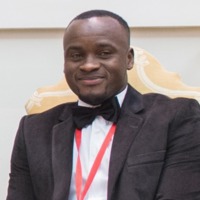
Al
Despite having the lowest regional prevalence of modern slavery in the world, Europe remains a destination, and to a lesser extent, a source region for the exploitation of men, women and children in forced labour and commercial sexual exploitation. Trafficking for sexual exploitation is the most widespread for of modern slavery with an 84% of victims trafficked for this purpose. The majority of those trafficked for this purpose are women and young girls, thought men and boys are also trafficked for sexual exploitation. They often originate from Eastern Europe within the EU as well as Sub-Saharan Africa, with the majority of people being trafficked from Nigeria to various parts of Europe including Italy, France, Spain and the UK through an array of complex trafficking networks. Al Bangura was born and raised in Sierra Leone but now lives in London with his wife and young children. Wanting to help support his family, Al travelled to Guinea where he was told by a man that he could play footbal in Paris. Al trusted this man, however on arrival in Paris, he was put in a room and subjected to sexual exploitation daily. He is now a professional footballer who has played for Watford Football Club in the UK’s Premier League.
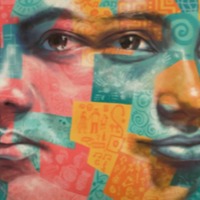
Ada B
The UK National Crime Agency estimates 3,309 potential victims of human trafficking came into contact with the State or an NGO in 2014. The latest government statistics derived from the UK National Referral Mechanism in 2014 reveal 2,340 potential victims of trafficking from 96 countries of origin, of whom 61 percent were female and 29 percent were children. Of those identified through the NRM, the majority were adults classified as victims of sexual exploitation followed by adults exploited in the domestic service sector and other types of labour exploitation. The largest proportion of victims was from Albania, followed by Nigeria, Vietnam, Romania and Slovakia. Ada moved to the London with her boyfriend 'Paul' hoping to start a new life and go back to school. Paul's uncle picked them up from the airport, and they were to stay at his for a while. However, upon arrival Paul left. His uncle raped Ada and told her Paul had gone back to Sierra Leone and she had to work as a prostitute. Locked up at all times and subjected to physical abuse daily, Ada was finally able to escape on New Year when she ran out the back door.
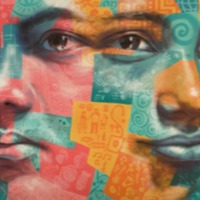
Amina*
The UK National Crime Agency estimates 3,309 potential victims of human trafficking came into contact with the State or an NGO in 2014. The latest government statistics derived from the UK National Referral Mechanism in 2014 reveal 2,340 potential victims of trafficking from 96 countries of origin, of whom 61 percent were female and 29 percent were children. Of those identified through the NRM, the majority were adults classified as victims of sexual exploitation followed by adults exploited in the domestic service sector and other types of labour exploitation. The largest proportion of victims was from Albania, followed by Nigeria, Vietnam, Romania and Slovakia. This survivor of modern slavery tells the Salvation Army of how she travelled from Sierra Leone to the UK after being promised a better education. Instead, she was trafficked into domestic servitude. This survivor was made to do all the housework, denied any privacy and never received any wages for her work. It was only when one of her employer’s children’s teachers called the police that this survivor was able to escape.
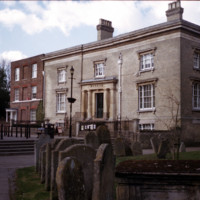
Wisbech and Fenland Museum
The Wisbech and Fenland Museum is one of the oldest, purpose-built museums in Britain. With its origins dating back to 1835, visitors are welcomed into a real ‘treasure house,' with collections housed in original nineteenth century cases. The museum is free to enter and focusses on local history, housing the vast and varied collection of the town’s literary and museum societies. Using these, the museum presents displays on a range of themes relating to key local industries, wildlife, archaeological finds and important people from the area.
One of these important people is Wisbech-born Thomas Clarkson, and it is through him that the theme of antislavery fills several of the largest cases in the main gallery. Using a combination of personal collections, archive material and objects linked to the wider slave trade (notably whips and a manacle), the museum follows Thomas Clarkson’s contribution to the abolition campaign, both in Britain and abroad. The museum also exhibits the narrative of Thomas’ brother John Clarkson who was instrumental in facilitating the movement of freed-slaves from Nova Scotia, Canada, to Sierra Leone.
This display was developed as a larger, standalone exhibition for the 2007 bicentenary entitled ‘A Giant with One Idea,’ but this was reduced following the end of the commemorations as funding was withdrawn.
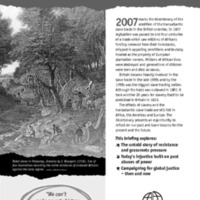
200 Years On: The legacies of enslavement and abolition
The World Development Movement seeks to increase awareness of political views in regards to world economic and social development. The organisation published a briefing in 2007 to mark the bicentenary, exploring the stories of grassroots pressure and the historic and modern campaigns for global justice. In collaboration with the University of Leeds, the World Development Movement also organised two public events looking to explore the lessons to be learned from the struggle to end the slave trade and examining contemporary campaigns in Africa and beyond for global social justice. Speakers included the Kenyan writer and academic Ngugi wa Thiong'o.
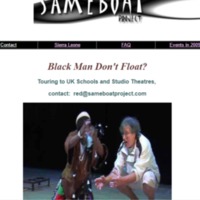
Black Man Don't Float?
Black Man Don't Float? is a play developed by Sameboat Project, a not-for-profit organisation working in collaboration with the Pierian Centre Bristol, Gecko Theatre Ipswich, and the Arrow Project at University College Plymouth. Set in the ocean off West Africa, a white yachtsman collides with an African economic migrant who is trying to reach the Canaries in a home-made vessel. They have to co-operate to survive, but their differences lead to confusion. Performed by West African performer Ayodele Scott and UK-based writer and performer Martin Hubbard, Black Man Don't Float? was shown in the UK and then travelled to Sierra Leone. The show was accompanied by a workshop entitled Fair Share, exploring issues around the fair sharing of resources, and the challenges facing developed and developing nations in their negotiations about aid, trade and the exploitation of natural resources.
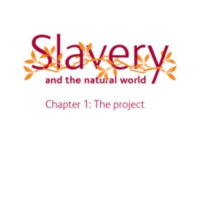
Slavery and the Natural World
In consultation with local community groups, in 2007 the Natural History Museum commissioned new research into its collections that link slavery and the natural world. The research uncovered experiences of enslaved people and the use of plants in their everyday life, as food, medicines and poisons. It also examined the complex relationships between enslaved people and naturalists exploring newly-colonised lands. The museum ran a series of public events, co-hosted by Race on the Agenda, which aimed to bring the historical, scientific and public viewpoints together. It created online educational resources on themes such as Commercial Plants, Everyday Life, Diet and Nutrition, and Resistance. The museum also developed cross-curricular ideas for school lessons in Science using the context of slavery, looking at foods across different cultures, for example.
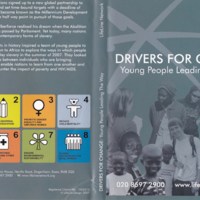
Drivers for Change: Young People Leading the Way
Drivers for Change was a project led by LifeLine Network, a network of partnerships between community organisations and NGOs with a common aim to fight poverty. In Summer 2007, a team of young people visited Zimbabwe, Sierra Leone and Dominica to explore the ways in which people were combating modern slavery. The trip was inspired by two significant points in history: the 1807 Abolition Act, and the half way point of the Millennium Development Goals, for which 189 nations signed up to a new global partnership to reduce extreme poverty. While in Africa, the group looked at how global partnerships between individuals bring communities together, and assist in countering the impact of poverty and HIV/AIDS. A film was produced documenting the trip, launched at an event was held at the Palace of Westminster.
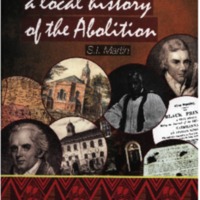
Lambeth and the Abolition
The Lambeth and the Abolition programme included debates, historic trails, a video conferencing discussion between people in Brixton, Ghana and Jamaica, Caribbean family history classes, creative writing workshops, and a dedicated series of events within Black History Month. ‘The Runaways’, an original drama about a runaway slave boy and a kitchen maid in London in 1700, was performed in Lambeth primary schools, accompanied by a workshop. The project researched the local historical links to abolition, and famously the activities of the Clapham Sect (William Wilberforce and his associates) who attended Holy Trinity Church in Clapham. A booklet by historian S. I. Martin sets the history of abolition in the larger context, through his study of the African Academy at Clapham, and his mapping of some of the links between Lambeth, Jamaica and West Africa at the beginning of the 19th century.
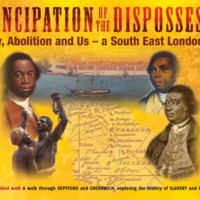
Emancipation of the Dispossessed: Slavery, Abolition and Us - a South East London angle
Emancipation of the Dispossessed was a local community project exploring the local history of Deptford and the surrounding areas and the connections with the transatlantic slave trade. Community groups and students from Lewisham College worked with theatre educators to research and develop 'Blood Sugar', a promenade performance through the Queen's House, Greenwich. The play, written and directed by John Turner, tells the story of slavery and abolition from a local angle, and the script was built around first-hand and eyewitness accounts, campaign pamphlets and reports to parliament. The project also produced learning resources aimed at Key Stage 3 History and Citizenship.
A guided walk explored Deptford’s links to the history of the transatlantic slave trade, uncovering stories of some of the local people who played an important role in the beginnings of the slave trade or the campaign for its abolition. London was an important slave trading port before Bristol and Liverpool dominated the trade. The trade and British colonies were protected by the Royal Navy, whose ships were built and prepared for voyages at the Royal Dockyards at Deptford.
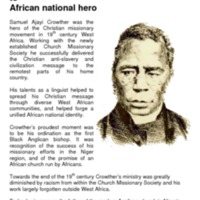
Samuel Ajayi Crowther: From slave boy to African national hero
Samuel Ajayi Crowther was Britain's first Black Anglican Bishop. He was born in Yorubaland, part of modern South Western Nigeria. After being enslaved, he was rescued at sea by the Royal Navy and began his missionary education in Sierra Leone. Crowther studied in Islington on two separate occasions: first, at St Mary’s Parochial School, and later, at the Church Missionary Society College on Upper Street. He was ordained at St Mary's Church in Upper Street before returning to Africa to begin his missionary work. His ordination as Bishop was in recognition of the success of his missionary efforts in the Niger region. His life, and connections to the London Borough of Islington, were the subject of this exhibition at Islington Local History Centre.
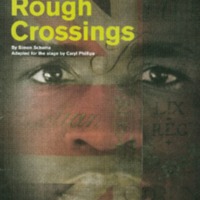
Rough Crossings
Historian Simon Schama's true story of a plantation slave (Thomas Peters) and a British naval officer (John Clarkson) and their search for freedom at the time of the American War of Independence. Schama's account was adapted for the stage by Caryl Phillips, directed by Rupert Goold and produced by the Headlong Theatre Company. It explores ideas of racial identity, home and freedom, as former slaves who fought for the British army are led across the Atlantic to the newly-created province of Sierra Leone. The play toured West Yorkshire Playhouse, Birmingham Repertory Theatre, Liverpool Everyman and Lyric Hammersmith.
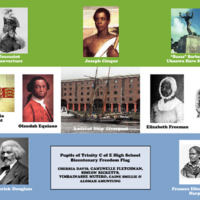
Bicentenary Freedom Flag
The Bicentenary Freedom Flag was displayed alongside an exhibition about Wartime Black History at Manchester Town Hall. The project was a collaboration between staff from Manchester City Council Corporate Services Black Staff Group and pupils of Trinity Church of England School in Manchester. The flag recognised the work, struggles and sacrifices of those who brought the slave trade to an end, and featured images of prominent individuals on the background of the Sierra Leone flag. Those featured on the flag included Toussaint L'Ouverture (General of the Haitian Uprising), the abolitionist Olaudah Equiano, the anti-slavery orator Frederick Douglass, the statue in Barbados of 'Bussa', the unknown slave, guide of the Underground Railroad Harriet Tubman, and Joseph Cinque, leader of the Amistad slave ship revolt. The accompanying exhibition included pupils' articles and creative writing. It also examined the history and role of the West India Regiments, British colonial infantry regiments largely recruited amongst freed slaves from North America and slaves purchased in the West Indies.
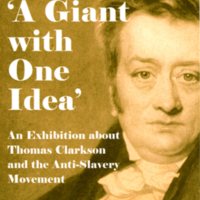
'A Giant with One Idea': An Exhibition about Thomas Clarkson and the Anti-Slavery Movement
A Giant with One Idea told the story of the anti-slavery campaign through the personal narrative of the abolitionist Thomas Clarkson, who was born and raised in Wisbech. The exhibition included an overview of the transatlantic slave trade, major campaigners in the abolition movement, the antislavery campaign after 1807, and details of Clarkson’s travelling chest, which he used to help illustrate the cruelty of the slave trade. The exhibition later travelled to other venues in the area. Accompanying the exhibition was a handling box based on Clarkson’s chest available for schools and community groups, as well as a children’s activity booklet led by the character of Clarkson himself. The museum also supported the publication of a number of books telling the life stories of Thomas Clarkson, and his less well known brother, the naval officer John Clarkson.
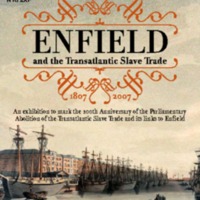
Enfield and the Transatlantic Slave Trade
An exhibition to mark the bicentenary was developed by Enfield Museum Service in partnership with the British Museum and Enfield Racial Equality Council. The exhibition looked at West African culture, the development of the local African community, the links between the transatlantic slave trade and Enfield, wealthy landowners and Quaker abolitionists who lived in the area. Free family days held during school vacations offered traditional Ghanaian story-telling, dancing and drumming, crafts and object handling. Living History Days gave visitors the opportunity to meet actors portraying William Wilberforce and Olaudah Equiano. School workshops included a drama session and performance about a runaway slave developed from material from Lambeth Archive. The museum service also produced a book, edited by Valerie Munday, which explored further the links between Enfield and the slave trade. The book was sent to all schools in the borough, and formed the basis of a teaching resource aimed at Key Stages 2 and 3. Loan boxes and handling collections provided by the museum service include Ghanaian artefacts and items relating to the slave trade. In 2011, Enfield Racial Equality Council unveiled a plaque to commemorate abolition at the Enfield Civic Centre.
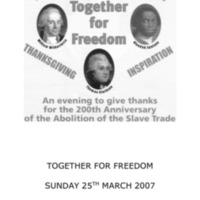
Wilberforce 2007 at Holy Trinity Church
Hull's parish church of Holy Trinity is where William Wilberforce was baptised in 1759. The Church held a number of performances and events throughout 2007. The Together for Freedom commemorative service took place on 25 March 2007, led by the Archbishop of York and featuring the Redemption Gospel Choir from Hull and Middlesbrough. The Freedom Flower Festival took place in June and the Songs of Freedom Music Festival in September, featuring performances by leading gospel performers and local schoolchildren. The London Community Gospel Choir gave a powerful concert, which highlighted the important role of music in the lives of slaves living on plantations. In August, the Freetown Society of Hull hosted a performance of the Milton Margai School for the Blind Choir from Freetown, Sierra Leone. A Panos photographic exhibition at the Church, Slave Britain, revealed the realities of contemporary human trafficking.
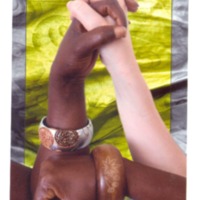
Greetings! Wilberforce Women
The Wilberforce Women project was launched by the Hull Women's Centre with the support of Wilberforce 2007. Hull based photojournalist Lee Karen Stow worked with groups of women from the twinned towns of Hull and Freetown (Sierra Leone), through photography and messages of friendship. Women from Hull were invited to think about themes of Pride, Freedom, Belief and Change and contribute a photograph on the chosen theme to send as greetings to women in Freetown. To return the greetings, women in Freetown were taught basic photography skills in order to interpret their own thoughts on the themes. A selection of the images were displayed at the Humber BBC Open Centre and on the BBC Humber website, as well as a dedicated exhibition at the Ferens Art Gallery and at the Wilberforce Institute for the Study of Slavery and Emancipation. A second stage of the project saw the images and messages being collated into a photographic book and DVD.
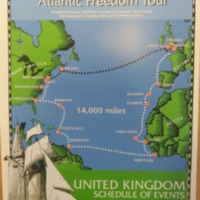
Amistad America's Atlantic Freedom Tour
A replica of the nineteenth-century slave ship Amistad visited Liverpool, Bristol and London as part of the Atlantic Freedom Tour in 2007-2008. The ship set sail from its home port of New Haven, Connecticut, on a 16-month 14,000 mile transatlantic voyage to retrace the slave industry triangle. The ship stopped at more than a dozen Atlantic ports, including Freetown in Sierra Leone. Students from the UK had the opportunity to join the crew of the schooner – a replica of the original ship commandeered by 53 of its African captives in 1839 – on one of its legs, and transmitted text, images and videos back to the classroom. At each UK port, the ship was open for guided tours. There were also accompanying lectures.
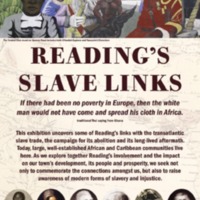
Reading's Slave Links
This exhibition from Reading International Solidarity Centre (RISC) in collaboration with local communities uncovered Reading’s links with the slave trade, the campaign for its abolition and its aftermath. Exploring Reading’s involvement in historical slavery and the impact on the town’s development, the exhibition focused on, for example, wealthy families in the area, the role of the Royal Berkshires in Caribbean colonies, and the story of Mary Smart, the earliest known Sierra Leonean resident in Reading. The project also sought to raise awareness of modern forms of slavery and injustice. It included workshops, a conference, and a quiz.
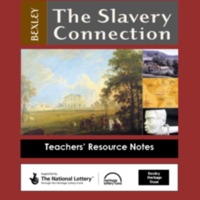
Bexley: The Slavery Connection
The 'Slavery Connection' project researched Bexley’s links with the transatlantic slave trade through the London borough's residents and buildings. The exhibition, which included objects from Bexley Museum, aimed to raise the level of understanding in local communities about the history of the slave trade, by highlighting numerous local connections - such as Danson House, once home to the sugar merchant and slave trader Sir John Boyd, while archives of the East Wickham estate reveal evidence of a West African coachman called Scipio. Over a two year period, the travelling exhibition was displayed at 14 sites, including local African Caribbean groups, youth centres, libraries and churches. The launch event at the Bexley African Caribbean Community Association was accompanied by displays of African dancing, drumming and drama. An educational handling box and teachers’ pack were created for use in local schools.